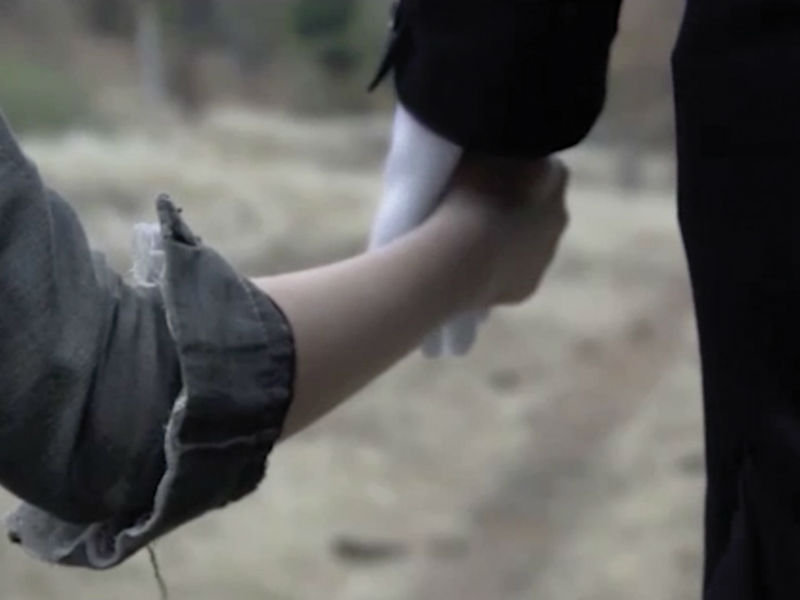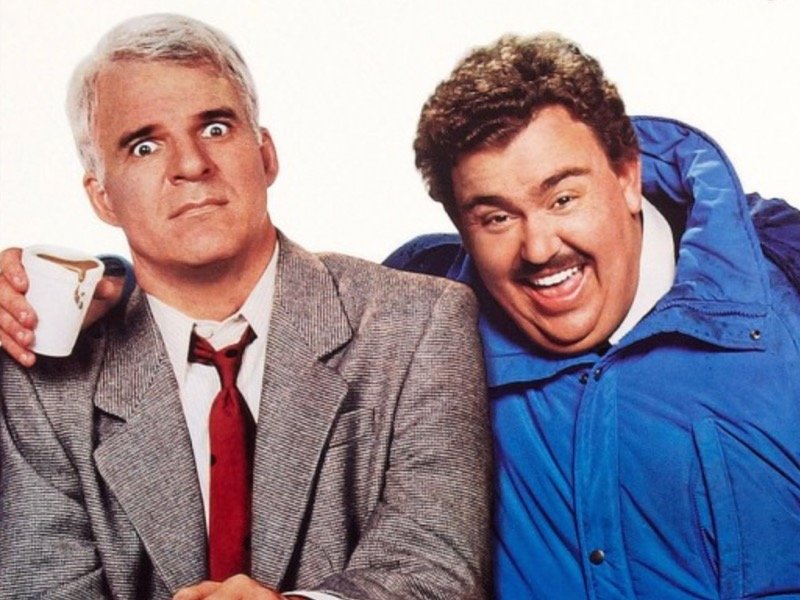Editor's note: This article was originally posted on Sept. 28 last year during the documentary's run at the Milwaukee Film Festival. It has been slightly updated to reflect the film's television premiere tonight on HBO at 9 p.m.
A chilling and brutal crime. Grainy footage from inside drab Wisconsin interrogation rooms and courthouses. Eerie, hypnotic aerial shots hovering over a frostbitten Midwestern landscape.
For those who journeyed into the madness of "Making a Murderer" earlier this year, those images and ideas might sound like pretty familiar, well-trodden territory. However, the case at the heart of director Irene Taylor Brodsy’s documentary, "Beware the Slenderman" – a pair of young pre-teen Waukesha girls who stabbed their friend in the woods 19 times in order to please a tall, faceless myth from the dark shadows of the internet – is completely its own beast, surrounded by its own dark and webbed woods of fascinating questions: about the internet, about growing young minds, about mental illness and about merely trying to fathom the grimly unfathomable.
Considering its local origins, it’s no surprise "Beware the Slenderman" was selected to the Milwaukee Film Festival last fall – and now tonight, it'll have its long-awaited television premiere on HBO at 9 p.m. During the doc's three-showing run at the film festival, we chatted with Brodsky about the origins of the movie, her approach to the horrific and heartbreaking story, and why true crime has become such a pop culture sensation.
OnMilwaukee: When did you first hear about the phenomenon of Slenderman, and when did you realize it would make a good documentary topic?
Irene Taylor Brodsky: My partner at HBO, Sara Bernstein, sent me a link to a New York Times article the day after they were arraigned – so I think that was two days after the crime. I’m a pretty avid newspaper reader, so I remember thinking, "How did she read that before I did?" (laughs) She sent it to me – and that’s all she sent. She didn’t send any note with it. And I wrote back and said, "So I guess this is our film, isn’t it?" Because we had been developing a film for several months already on children and the internet – particularly the child brain and child development in the age of 24/7 connectivity. I wasn’t quite satisfied with any of the narrative structures that I had yet.
I didn’t come into this film as a true crime filmmaker; I came into this film as someone who was asking, I think, really meaningful questions about raising our children and all of the wonderful things the internet brings to us that we’re completely ill-equipped to deal with, so sometimes they get misconstrued and can lead us down a garden path. So when Sarah sent me that link, I just got chills – I think like anyone did when they learned about this. I thought this is just a horrifying embodiment of all these things that I’d been thinking about already for a couple of months and interviewing people about, but didn’t quite have my story yet.
Like you said, you’re not coming from the true crime documentary format. Were there any films from that genre in mind inspiring you how to attack this particular story?
I really didn’t. I’m a veteran doc maker, but I’d like to think that most of my films are very different. I never really saw this as a true crime film – although a lot of people’s response to the film thus far has been that of a true crime thriller. And if that's what it offers to people, then that’s fine. That’s a very interesting and compelling kind of film to watch.
But for me, it was more of a character exploration of this perfect storm between these two 11-year-old minds. You know, when they hatched this plan, they were 11. We always say they’re 12, but the truth is this whole thing got concocted in the minds of 11-year-olds. For me, really, it’s more of a film that could ask these confounding questions.
I knew that I would need, when I was in Wisconsin, I would shoot a lot of aerial visuals to sort of give a visual cushion to all of the questions we wanted to ask, without just listening to a person sitting in a chair as an expert talking about things. So as far as did I have anything that I was modeling after, I would say no, but I knew that I needed the film to have a certain visual loftiness that almost put you in this kind of trance. Because these girls, let’s face it, they were sort of entranced. So I have these moments in the film where we drift into the sky and you’re just sort of looking at things, but you’ll notice you’re hearing ideas. You’re hearing questions. You’re hearing things that make you say, "Huh, I hadn’t thought of it that way."
So I knew the film would be that, and I have to give my editor a lot of credit because a lot of the film came together in the edit room. I didn’t have some grand plan until we really started editing the film.
How long did you spend filming in Wisconsin?
I think it was about a year and a half. But we would come out every time there was movement in the court case. And the rationale for that was simply that, every time there was movement in the case, we knew that the parents – the families of the perpetrators who we were working with – we knew that there might be a spike in their emotional tenor. Something would shift, and when things shift, often things come up, things bubble to the surface.
So I made a point to be there, and I’d typically come a day or two or even three before the court date so I could be with the families and see how things were going, and then something would happen – the judge would make a decision, something would be announced, some information would come out, they would learn something about their daughter that they didn’t know before. And then that gives you something to talk about.
How do you approach talking with these parents about something horrific that their children did?
They’re human, and I think they wouldn’t want to be around someone who they felt was judging them all the time, so I think it was important that I just not see them through the eyes of what their daughter did and just see them as people. It was very apparent, once I got to know the parents of the perpetrators, that they had as many questions as I did. It’s not like they were holding some lock and key, and they had all the answers and I was trying to get them. So, in a way, we sort of uncovered some of these emotions surrounding them together. I guess I was tentative. I had to take it easy.
Why do you think – with "Making a Murderer," the Jon Benet special, the OJ Simpson case and the Slenderman case – the true crime genre has become such a sensation right now?
Well, I mean, think of how many stories are out there that have had no film made about them. Those three stories you just mentioned are all very different, and I’m not sure I could tell you one salient quality between Jon Benet, OJ Simpson and these two 11-year-old girls.
But I think the way in which the true crime genre sort of unravels stories, and it takes information and rolls it out to the viewer in an order that may not be the same order you learned it in the news media in the day-to-day news. I think that’s where the real craft comes in with the true crime genre. It’s not just picking the right story; it’s taking a story and delivering the material to your viewer in a way that’s maybe out of order or has a certain emotional tenor to it that makes you have a lump in your throat or disgust or whatever it may be. So I think it really has to do with more of the filmmaking style than the topic.
Yeah, the approach.
I joke with my 10-year-old that he could make a mystery movie out of anything. It could be about why did my brother decide to wear green today instead of blue, but if you tell it well …
"Beware the Slenderman" will premiere tonight on HBO at 9 p.m.
As much as it is a gigantic cliché to say that one has always had a passion for film, Matt Mueller has always had a passion for film. Whether it was bringing in the latest movie reviews for his first grade show-and-tell or writing film reviews for the St. Norbert College Times as a high school student, Matt is way too obsessed with movies for his own good.
When he's not writing about the latest blockbuster or talking much too glowingly about "Piranha 3D," Matt can probably be found watching literally any sport (minus cricket) or working at - get this - a local movie theater. Or watching a movie. Yeah, he's probably watching a movie.







